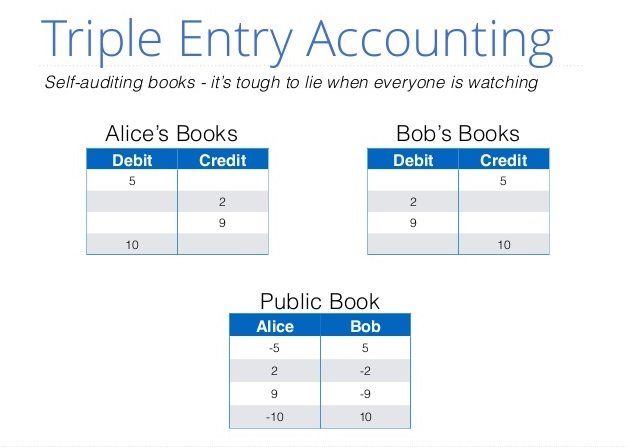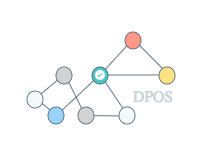译文/Translated:
你们好,Steem的世界
@dantheman指出,对Steemister而言,时而被称之为Iang的Identity是隐晦而神秘的。是的,Iang就是如此!但既然只有少数信息搜索能揭示阴暗的过去,那我们还是省点力别去搜了。
我大约于1995年与Gary一起在阿姆斯特丹加入了金融加密货币圈。我们位于小镇的一边,这里研发首个各类资产加密安全交易系统,1990年代称之为Bitshares,而小镇另一边则是DigiCash的天下,也就是发展出首个eCash(电子现金)的传奇系统。我们称之为1990年代的比特币。那段日子多么令人兴奋,我们曾认为自己将要改变世界。阿姆斯特丹的DigiCash,旧金山的Cypherpunks,加勒比及波士顿的会议,100倍优化……我们站在1880年代中期以来从未出现的经济与政治复兴的顶点,当时的影响延传至今。

或许应该说今天你们所想到的一切概念都是那个时代所创造的:共享分类账、三式记账法、工作证明、智能合约、社会信用体系…都是1990年代发表。但我们都“过早”独立,这基本上是一个没能完全解决问题的糟糕借口。
大约在2000年代早期,我耗费大量时间用电子黄金(e-gold)做了这样那样好的坏的事,这也是最具影响的里程碑之一。DigiCash所承诺之事最早在电子黄金以及一个普通的老式SSL网站(POSW?)上得以体现。我的公司组建了一个电子交易贵金属的交易所,在交易的一分钟内返黄金或银(固定的)。这个项目并未善终,因为2000年代中期部分地区,一系列法庭案例、仲裁(嗷!糟透了!)扣押和关闭。众多电子黄金并未正确返还给用户(根据一个最近的账户显示,概率大约为85%)。

诸多系统也发生了相似的关闭事件,一些风光些,一些简陋些,一些完完全全就是一场灾难。我提到这些事情是由于两点原因。首先,在2008年,Satoshi Nakamoto宣布了一款不会关闭的货币系统,并且由于系统关闭而导致用户的金钱损失都极为清晰。其次,许多新区块链社区的经验已经载入史册,但比特币社区却十分骄傲,那些残酷的教训它们屡犯不止。Mt.Gox, Bitfinex, SilkRoad, The DAO,随你们怎么叫,我们已经见过一些它的变形。
而在大家都用比特币玩得很开心的时候,我剑走偏锋选择了Identity。通过CAcert值得信赖保证人的全球社区及我们的仲裁网络,我们发现了在网络上创建全球首个信托社区的方法。并且,在肯尼亚一家创业公司的工作经历教会我们如何创建金融信托。所有这些都让我能够开始在Identity上推出一款杰作,至少可以用以记录我的经历,但也用以解释运作的Identity模型。

这些都是题外话,都过去了。我回到了核心的金融加密这个领域。首先是在R3工作,这是一家金融财团,采用Corda改写了在规范环境内合约拟定的规则。现在我回到了用户这一边,通过即将揭晓的EOS项目再次与小型企业和个人合作。我们希望能再次改写合约的拟定,这次使用为普通可扩展企业调节大量交易,并提供重要且互利合约的区块链。
这让我看到了Steem,它是否是唯一一个向普通用户提供非链式应用程序的区块链?同样,Bitshares在我脑中的印象只有见过平静的cypherpunk dayz的人才能理解。
你们所听过、见过的传闻和涨落都只是顺带,我写过的仅有几篇内容点明了方向。简而言之,我相信前往互利关系的道路始于良好的管理,而这也是技术建立之处。若你们同意这样的管理是良好关系的基础,那么就拭目以待吧!
原文/Original:
Hi there, World of Steem,
it was pointed out by @dantheman that the Identity sometimes known as Iang was opaque and mysterious to the Steemisters. Yes, and Iang likes it that way! But only a little googling will reveal a dark past so let me save some picowatts for your fingers and google.
I entered the financial cryptography space around 1995 when joining up with Gary in Amsterdam. We were on one side of town developing the first cryptographically secured all-asset trading system, which could be called the Bitshares of 1990s, while over on the other side of town was DigiCash, the legend that developed the first eCash. Which we could call the Bitcoin of the 1990s. And heady days they were, ones where we thought we were about to change the planet. DigiCash in Amsterdam, the Cypherpunks in San Francisco, conferences in the Caribbean & Boston, 100x improvements … we were at the cusp of an economic and political rebellion not seen since the mid 1800s, the ripples of which are still widening today.
It’s probably fair to say that everything you think of today was conceptually invented in those times: shared ledgers, triple entry, proof of work, smart contracts, social reputation systems… all had their airing in the 1990s. Yet we were all independently “too early” which is basically a poor excuse for not quite cracking the problem.

Around the early 2000s, I spent a lot of time doing good things and bad things with e-gold, which is one of the heavily influential milestones – what DigiCash promised was earliest seen with e-gold and a plain old SSL website (POSW?). My company put together a digitally traded precious metals exchange that returned your gold or silver within a minute of trade – settled. It wasn’t to end well, though as somewhere around the mid 2000s, there were a series of court cases, arbitrations (ouch! bad!), seizures and shutdowns. A lot of the e-gold was never returned to rightful owners (at about an 85% rate according to one recent account).
Similar shutdowns happened to many systems – some good, some shady and some downright evil. I mention these events for two reasons. Firstly, in 2008, Satoshi Nakamoto announced a system of money that could not be shutdown, and the relationship to systems shut down and the money lost through those shutdowns by rightful owners was as clear as a bell. Secondly, a lot of the experiences of the new blockchain community were already writ in history, yet the Bitcoin community took great pride and joy in re-learning the harsh lessons all over again. Mt.Gox, Bitfinex, SilkRoad, The DAO you name it, we’ve seen some variant of it before.

Now, while seemingly y’all were having fun with Bitcoin, I was shifting sideways into Identity. By ways of CAcert’s worldwide community of trustworthy assurers and our arbitration network, we discovered how to create the first worldwide community of trust over the net. And, with a stint in Kenya working on a startup, they taught us how to create financial trust. All of which was enough to bring me to start publishing an opus magum on Identity, to record at least my journey, but also to explain the model of Identity that works.
Such digression is all in the past now, and I’m back into core financial cryptography. First with a stint with R3 – the financial consortium that rewrote the rules of contracting within the regulated environment with Corda. And now I’m back in the user side to work with small businesses and individuals again through the soon-to-be-revealed EOS project. We’re hoping to again rewrite the rules on contracting – this time with blockchain mediating huge numbers of transactions and meaningful and beneficial agreements for ordinary, scalable business.

Which has brought me to look at Steem – is this the only blockchain that delivers a non-chainy application to ordinary users? And also Bitshareswhich causes such echoes in my mind that only those who saw the halcyon cypherpunk dayz would understand.
These rumours and rhythms you’ve seen only in passing, as there have been only a few posts I’ve made that point in directions. In short, I believe that the path to beneficial relationships starts with good governance, on which tech is built. If you agree that governance is the foundation of good relationships, then watch this space!
原文链接/Original URL: